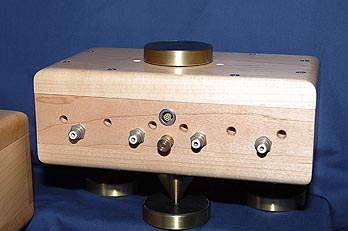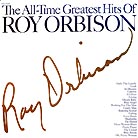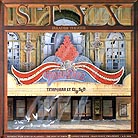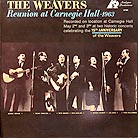 |
||||||||||||||||||||
| Interview with Lloyd Walker on the Reference phono preamp There are several highly regarded phono preamps that have complex circuitry with a variety of adjustments including loading, capacitance, gain and more. You have basically taken the opposite approach. The first question – why no tubes? You love tubes. Tubes are in all of your other custom designs including your new linestage. Why not in the phono preamp? I am a tube freak. I love tube. But I don't like 'em in the phono amp. Why not? Well, for one thing, tubes age, their characteristics change, they're noisy, they're susceptible to micro vibrations and microphonics. If you have a low-output moving coil, the only way you can get the S/N ratio and gain up is to series-parallel a lot of tubes. Then you're going nuts trying to get some good tubes. You may be running somewhere between 200 - 500 volts inside this thing and you're trying to amplify something way down in the micro-volt region. In my opinion, it's too noisy, it's too colored and it's not linear enough. Some other high end companies would disagree. Blasphemy, I know. That's a somewhat controversial approach. Tubes are sweet and I like them everywhere else but not in a phono preamp. That may be controversial so take it with a grain of salt. Do what you want and what you like. But ultimately, if you want the truth, you gotta listen! What did you choose? Did you design the preamp for a certain 'sound'? I don't design to make something sound better than what it really is for the simple fact that if you take a bad recording and whatever you're using makes it sound better, I guarantee you that a great recording will become so dull, boring and distorted that you'll hate it. Always test with classical first, then go to whatever music you like. If it'll play classical, then it'll play anything else as far as I'm concerned. Keep it honest, simple and pay attention to details. For example, we were in Taiwan and I was showing the table and the phono preamp to three potential customers along with the dealer. I told them that I could make the system sound another 10% better if they could live without the orange and green LEDs on the front. They said "Ridiculous." So I popped the hood, cut the LED out, removed the on/off switch, put it back together and actually, things were about 15% better. One of the gentlemen there said he supplies components to the audio-video industry and wouldn't have believed this unless he heard it. And he bought the turntable. Every time you put something in your audio or video system that is not necessary, you are compromising the sound and picture to a certain extent. The more switches, knobs, lights, bells and whistle, the more you give up. To a certain extent, they all sound the same. Obviously you have to have an on/off switch on your amps – you have to have some of these things. But if you only use what's necessary, you can buy much better parts so the deleterious and accumulative effects will be much less. You can't get rid of the effect in total but you can minimize it. That's what we did with the motor controller for the turntable. I even use an RFI filter in the pump not to protect the pump but to eliminate or greatly reduce any electrical noise that might be re-injected back into your A/C. We look at everything. For instance, while we were listening a while ago, I had these lights on down in the basement... When my wife and I listen on Saturday nights, we turn off all the lights in the house. It does make a difference, even with a separate panel and pretty clean electricity. I agree with you. Back to the design. Low cartridge signal means no tubes? Right - and I tried tubes. Some of them sounded really good, too. But I like this best, solid state. It tells the truth. All of our designs aim for the musical truth. You know, at one time we were checking interconnects and I watched this man evaluating a phono interconnect and he just flipped out over one. He said "Let's give this a real test" and he put on a really bad record. Well, guess what? It sounded terrible. He said "Well, I don't know about this interconnect because that sounded terrible." I said "Well, to me it sounded great because I am familiar with that record and it should sound terrible!" Then he switched it out and put a $15,000 phono interconnect in and lo and behold, it sounded listenable. He proclaimed "That's the best." I said "No, it's not. Put one of those great records on that you just got through listening to and paid $500 a piece for and let's listen again." And he did and it was awful. But back to our phono preamp - I want accuracy, not pleasant colorations. |
||||||||||||||||||||
| When I originally posted my observations on the phono preamp on the Asylum, I paraphrased your comment about a government-sourced chip. Some labeled this comment ridiculous. Actually, there are two eight-pin ceramic chips in the phono amp that are weapon's grade. This chip is no longer manufactured (a variant of it is currently made) so I had to buy a lifetime's supply. Don't worry about it. I'm keeping some in reserve in case something goes wrong. They're extremely expensive. |
 |
|||||||||||||||||||
| Can you offer any insight into the circuit design? Everything's cryogenically treated after the whole thing is assembled - so everything's cryo'd including the case. The signal enters through custom RCAs and travels less than two inches to this chip where it is actually soldered to the input resistor of the chip. The signal exits that chip and proceeds straight out to the output - less than two inches. So the remote power supply and the redundant regulated power supply in the phono preamp itself all support just this one chip. The RIAA is passive and in parallel so there are no capacitors in the signal path coming in or going out. There are no servos to eliminate D/C offset, there are no capacitors nor any coupling transformers. You get a digital voltmeter and a little screwdriver and you null the D/C offset. Check it about twice or three times a year and you should be fine. That's it. Resistors? We use all nude components including custom nude foil-on-ceramic 0.005% tolerance resistors and the best Black Gates made. Everything is nude. There are no circuit boards, everything is point-to-point and mostly actually component-to-component or part-to-part. People have questioned the nude components, specifically their exposure to the air and pollution and how corrosion would degrade them over time and have a deleterious sonic effect. Nonsense. The reason for the caps being nude is that the plastic's stripped off but that's only the shell for the Black Gate caps. No problem there. The nude foil resistors have no plastic or epoxy seal but there is a very thin protective coat to protect the foil. The phono preamp is true dual-mono, with two power cords and two IECs and everything is cryo'd. There are 16 high-speed, zero-recovery rectifier diodes for rectification. They sound the best. There's no wiring between them. They are all connected to each other without a circuit board. There's just one inch of wire to the power supply capacitors. There's no circuit board even in the power supply? Everything is point-to-point? Everything is point-to-point and most of it part-to-part - the input and filter caps have the regulator soldered to them. The reference voltages regulators are soldered to the caps - there's no wire. The nude resistors are soldered to the regulators - there is no wire. The wiring is just the umbilical cord and one ground wire for each channel's power supply, with two power supplies per channel. By the way, those are separate - the positive and negative legs are fully discrete. The phono preamp itself then duplicates everything again so there's actually six stages of regulation. Again, very little wire in the phono preamp - no circuit boards, components are connected directly to components. I found out no wire plus the least amount of solder you can get away with are best. In fact, solder is just a necessary evil. Do different solders sound differently? Absolutely. But the best solder is no solder. Well, think about it. You're spending $20, $50, $100/ft for some exotic ultra-pure wire. Then you have it cryo'd. Then you look at the solder and what? 4% silver? What's the rest of it? Bad bad conductor - but it's a necessity. The input and output wiring in our phono preamp is screw-terminated - there's no solder except at the chip itself where one solder joint connects the input wire and the input resistor. So there's only one, not four, five or six separate solder joints. When did the phono preamp come into existence? I actually bought out American Hybrid Technology. I liked their phono amp at the time and was using one. Then I bought him out. Then I spent 2.5 years re-designing it before I brought it to market. When was this? Ballpark? Five years, I guess - at least five and probably approaching six now. I redesigned the whole thing. There's only two original parts in the whole design left, everything else changed. You know, the further we went... I'm not interested in building something so-so or average-sounding. I'm too small a manufacturer for that. It has to be better or no one would bother with Walker Audio. You have to make it better and that takes a lot of time. But it's the only way we can be competitive. And the evolutionary refinements are similar for the phono preamp as they were with the turntable? Yes. You moved from metal to wood. Why - decorative? No, wood sounds better and it's 1" thick rock maple.
|
||||||||||||||||||||
That's what the turntable sits on? Yes. We actually have two versions for that - rock maple butcher block or Brazilian cherry configured as butcher block which is even heavier. Is one sonically better? Boy, that's a tough one; it's close. I have not done back-to-back testing but we'll do it soon. I can tell you that I think the Brazilian cherry is a little bit better. I'm sorry to say but it is. |
||||||||||||||||||||
 |
||||||||||||||||||||
|
|
||||||||||||||||||||
Reference records These were used primarily for the above discussions and all are highly recommended. Dynamics: Big Band Jazz (Umbrella D to D) |
||||||||||||||||||||
 |
||||||||||||||||||||
 |
||||||||||||||||||||
 |
||||||||||||||||||||
 |
 |
 |
||||||||||||||||||
My system, history and biases A little about my system and my listening biases: Although I appreciate the technical achievement of equipment, the music is what really matters and the 'goose bump' factor matters most. I have always been drawn to the musical experience of vinyl. To me it is more emotional, exciting and holographic. I have never been able to duplicate these experiences with digital. The midrange is my top priority followed by the soundstage. Get these two right and you're well on your way to the magic. Also, if the micro-dynamics are right and you can distinguish between the subtleties of instrumental expressions, most other elements fall into place. Finally the frequency extremes - highs should reflect the actual recording; strings should have a balance between sweetness and the right amount of edge; horns should have that bite without hardness; lows should be tight, focused and bloom into the room with front-to-back depth. I have stayed away from the intense debate of CD vs. vinyl. I know that some argue how with vinyl, you're hearing pleasing euphonic distortion. To me, it does not matter. I just find vinyl far more exciting than digital. I have listened to high-end digital and have found the Levinson separates, dCS and a highly modified Sony SCD-1 to be superb but in direct comparison to vinyl using the same recording, records always win. I love it when music sweeps you away and you temporarily lose track of reality. Neither my wife nor I have found a single CD that matches or exceeds its vinyl counterpart. Well, that is my vinyl bias. The real issue is that one derive pleasure from his or her system. If a person enjoys digital sound, great - that's what our hobby is all about. I never try to convert anyone to vinyl. I respect their choices. |
||||||||||||||||||||
| As to my vinyl quest? My first great table was the Linn LP12 - wonderful sound but in retrospect, my system at that time was not up to the standards set by the Linn. I moved to VPI and finally ended up with the TNT III to IV, Graham and Audioquest 77fe. This combination was my vinyl standard for over 7 years. It gave me my education about sound staging, depth, imaging and all the other buzzword attributes that define our audio vocabulary. I currently alternate between the Clearaudio Reference Wood and Magic Diamond cartridges. My current electronics are the VTL S400 amp and VTL 7.5 preamp. Prior amps were the Tenor 75is and Levinson reference. Speakers are the amazing Wilson X-2 Alexandrias. Predecessors included Wilson X-1s, Von Schweikert VR8s, Thiel 3.6, Wilson CUBS and others. Today, the system resolves like no other I have heard. I have traded | ||||||||||||||||||||
 |
||||||||||||||||||||
| long hours at work for large and small improvements in my rig. My goal is the 3-dimensional holographic presentation of music so that, for even a small amount of time, I can suspend reality and believe that the performers exist in real space right before me – certainly an elusive goal. I favor speed, detail and transparency over warmth and romantic lushness. Postscript Readers will notice that the phono preamp in the system pictures differ from the full shots. From the time of my original purchase, Walker upgraded to a Second Edition with maple cabinet, upgraded power supplies with twin power cords and some improvements in the amp. My phono amp section was upgraded but due to the size of my turntable platform, it would not accommodate the new larger wooden chassis. Rest assured that this review applies equally to the first and second editions. |
||||||||||||||||||||
 |
||||||||||||||||||||
 |
||||||||||||||||||||
| Manufacturer's website | ||||||||||||||||||||
 |
||||||||||||||||||||